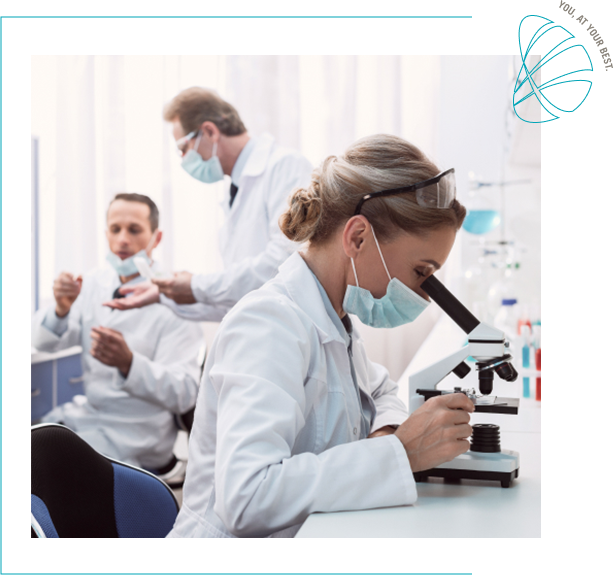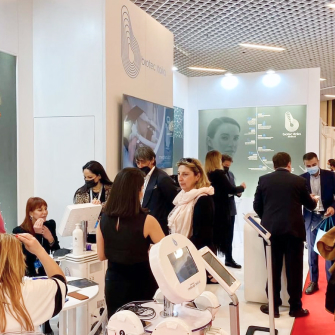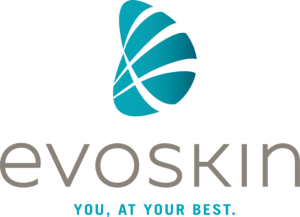Stay Ahead of the Curve with the Evoskin Academy
Stay Ahead of the Curve with the Evoskin Academy

Your Ultimate Resource for Aesthetic Medicine
At Evoskin, we’re dedicated to ensuring the success of your practice through providing the best support and resources available. Our goal is to help you stay ahead of the curve by providing access to the latest information, techniques, and expert insights in the field of aesthetic medicine.
To that end, we’ve created the Evoskin Academy – a learning section specifically designed for medical professionals. In it, you’ll find a wealth of resources, including the latest industry publications, expert insights, and in-depth discussions of the most relevant techniques related to each product in our portfolio.
Whether you’re new to aesthetic medicine or a seasoned professional, the Evoskin Academy is an indispensable resource for anyone looking to stay informed, up-to-date, and ahead of the curve in this fast-moving field.
Stay Up-to-Date with the Latest Industry Publications
AlexPro 760/808nm and Diode 810nm
“One‐year Follow‐up Results of Hair Removal Using an 810nm Diode Laser”, David J. Goldberg MD.
This publication reports on the one-year follow-up results of using an 810nm diode laser for hair removal. The study found that after three axillary hair removal treatments, spaced 4-6 weeks apart, there was an average hair count reduction of 70% which was maintained at the 1-year follow-up. The authors conclude that the 810nm diode laser is a safe and effective option for long-term hair removal.
“Hair removal utilizing the LightSheer Duet HS hand piece and the LightSheer ET: A comparative study of two diode laser systems in Chinese women.” Zhan-Chao Zhou, Li-Fang Guo & Michael H. Gold.
This study compares the efficacy, safety, and pain associated with using two diode laser systems for axillae hair removal in Chinese women. After three treatments, hair reduction was 81-85% with no significant difference between the two systems. Overall, the study concludes that the LightSheer Duet HS is a safe and effective method of hair removal with less pain.
“Photosclerosis of cutaneous vascular malformations with a pulsed 810nm diode laser”, Lawrence S. Bass
A study on the use of 810nm diode laser for treating cutaneous vascular malformations such as telangiectasias and spider veins. Results showed telangiectasias to be the most responsive with no scarring observed. The study suggests pulsed diode laser exposure as a potential effective treatment option.
SLP ND:YAG 1064nm
“Long-pulsed Nd:YAG 1064nm in the Treatment of Leg Veins: Check up of Results at 6 Months in 100 Patients.” Trelles, Mario A., et al.
This study looked at the effectiveness of a long-pulsed Nd:YAG 1064nm laser in clearing leg veins in 100 female patients over 6 months. The laser was used with various pulse lengths, energy densities and spot sizes. The overall satisfaction rate was 57% and objective assessments were 64% to 71%. The Nd:YAG laser was found to be an efficient treatment with minimal side effects and better results on blue and thick vessels.
“Evaluation of Long-pulsed 1064 nm ND:YAG Laser-assisted Hair Removal vs Multiple Treatment Sessions and Different Hair Types in Indian Patients.” Rachna Mittal, Snehal Sriram, and Kamaldeep Sandhu.
The study evaluated the safety and efficacy of long-pulsed 1064 nm Nd:YAG laser-assisted hair removal in 59 Indian female patients with skin phototypes IV and V. The patients underwent 6 consecutive treatment sessions at 4-6 week intervals and were divided into 3 groups based on hair grade changes: achievers (56%), responders (23%), and failures (20%). The results showed that 57.5% of patients with terminal hair became achievers while 53.8% of those with intermediate hair became achievers (not significant). No permanent side effects were observed.
“Laser Treatment of Vascular Lesions.” Bard S, Goldberg DJ (eds).
This publication describes the use of Nd:YAG laser, specifically the long-pulsed type, in treating various vascular lesions such as leg veins, port-wine stains, blue vessels, and venous lakes. The laser is effective due to its depth of penetration and is the preferred choice for lesions off the face. Cooling during treatment is important to ensure safety. The Nd:YAG laser is versatile and can be used for both pigmented and vascular indications.
“Treatment of lower extremity telangiectasias in women by foam sclerotherapy vs. Nd:YAG laser: a prospective, comparative, randomized, open-label trial”, B. Parlar, C. Blazek, et al.
This study compares the efficacy of two treatments for leg telangiectasias: sclerotherapy with polidocanol and long-pulsed Nd:YAG laser. 56 female patients were treated and evaluated by handling physicians and blinded investigators. Both treatments showed similar improvement in clearing the vessels, but sclerotherapy was found to achieve results faster. Laser therapy was associated with more pain, but both treatments had good patient satisfaction. The choice between treatments should consider the presence of small veins, needle phobia, and allergies to sclerosants.
Q-Switched ND:YAG 1064
“Treatment of benign pigmented epidermal lesions by Q-switched laser.” C R Taylor, R Anderson.
This study tested the efficacy of using a Q-switched laser to treat benign pigmented epidermal lesions, such as lentigines and cafe-au-lait macules. The results showed substantial clearing of the lesions after one treatment, with no scarring observed.
“Evaluation of the Efficacy of Tattoo-Removal Treatments”, Masa Gorsic, Irena Bacak, et al.
This study evaluates the effectiveness of tattoo removal treatments using Q-switch Nd:YAG laser. The study proposed an assessment method of tattoo removal efficacy and showed that multiple treatments are needed for complete removal. The study found that Q-switched lasers effectively remove tattoo ink.
CPL Calibrated Pulsed Light
“The Use of Intense Pulsed Light (IPL) for the Treatment of Vascular Lesions”, Behrooz Barikbin.
This review article summarizes the use of intense pulsed light (IPL) for the treatment of vascular lesions. The article provides an overview of the current literature and discusses how IPL is used for treating different types of vascular conditions, which are an important indication for laser therapy.
“Intense Pulsed Light Source for the Treatment of Dye Laser Resistant Port-wine Stains” P.Bjerring, K.Christiansen & A. Troilius.
This study evaluated the efficacy of intense pulsed light (IPL) in treating port-wine stains (PWS) that were resistant to multiple pulsed dye laser (PDL) treatments. The IPL treatment was found to be safe and efficient for the treatment of PWS.
“Unconventional Use of Intense Pulsed Light” D.Piccolo, D. Di Marcantonio et al.
This publication reports on 58 unconventional uses of Intense Pulsed Light (IPL) in various cutaneous diseases such as rosacea, port-wine stain, seborrheic keratosis, and more. The results suggest that IPL can be a valuable therapeutic option with excellent outcomes and low side effects, though the effectiveness depends on the operator’s experience and training. The daily use of IPL is expected to increase clinical experience and improve its effectiveness over time.
“Hair removal with intense pulsed light.” Ahmed F El Bedewi.
This publication reports the results of using intense pulsed light (IPL) for hair removal on 210 patients with skin type III to V. The treatment resulted in significant hair reduction (80%) with no side effects and minimal complications. The authors conclude that IPL is safe and effective for hair removal.
“A comparative study of hair removal at an NHS hospital: luminette intense pulsed light versus electrolysis.” Karen Harris, Janice Ferguson & Samantha Hills
A comparative study of 25 women showed that Intense Pulsed Light (IPL) was a more effective and preferred method for hair removal on the face compared to electrolysis. The IPL method showed a 77% average hair reduction after five treatments with a high patient satisfaction rate of 8.3 out of 10. Electrolysis had a lower patient satisfaction rate of 5.4 out of 10.
Er:YAG Fractional 2940nm
“Erbium-YAG Laser Therapy – Analysis of More than 1,200 Treatments.” Uwe Wollina.
This is a retrospective study of over 1,200 patients who underwent erbium-YAG laser therapy between 2003 and 2011 at a single center for various benign, premalignant and malignant skin conditions. The majority of treatments did not require anesthesia and were effective in removing lesions. The study showed that erbium-YAG laser is a versatile and effective tool in treating common cutaneous disorders with minor downtime and limited pain.
“The Erbium YAG Laser a Review and Preliminary Report on Resurfacing of the Face, Neck, and Hands.” David H. McDaniel, MD, Keith Ash, MD, Jeff Lord, MD, John Newman, MD, Mark Zukowski, MD.
The study evaluated the use of the Erbium: YAG laser for resurfacing of the face, neck, and hands and found that it was effective in reducing wrinkles and improving the appearance of sun-damaged skin. The recovery period was shorter than typical CO2 laser resurfacing.
“2940-nm Erbium Laser, fractionated with dual pulse, for photo rejuvenation” Roberto A. Mattos, Neusa Y.S. Valente, Mônica Senise, Valéria B. Campos
This study investigated the effects of 2940-nm Erbium Laser in its fractionated and dual pulse mode on cutaneous tissue for photo rejuvenation. The study concluded that the 2940-nm Erbium Laser in fractionated and dual pulse mode showed marked improvement in the treatment of photoaging.
“Dependence of Skin Ablation Depths on Er:YAG Laser Fluence” Karolj Nemes, Janez Diaci, et al.
This study explores the dependence of skin ablation depths on the laser fluence of the Er:YAG laser system. The results show that the laser fluence is the major factor in determining ablation depth, with the depth growing linearly with the fluence above the ablation threshold.
All publications mentioned above are available on Pubmed. Reach out to us if you have any questions or what to learn more about them.




